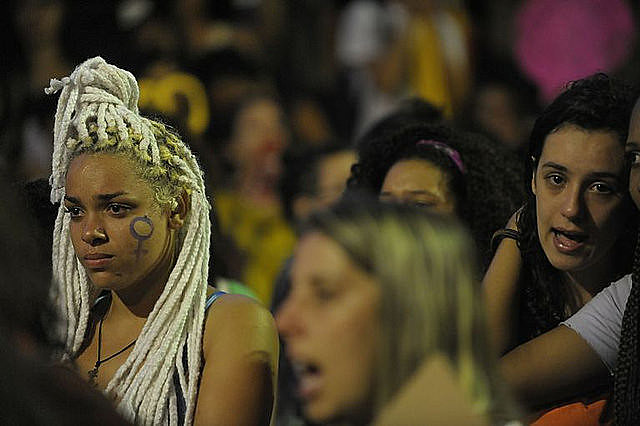Brazil registered a total of 4,657 female homicide victims in 2016, placing it among the countries with the highest levels of gender-based violence, according to new data published in the Annual Statistics on Brazilian Public Safety.
However, the most recent statistics fail to categorize female homicide victims on the basis of race or class, which critics argue promotes misleading narratives that ignore the intersectional nature of femicide as it relates to race and class.
"My research suggests that violence in Brazil is not a phenomenon that affects everyone equally. On the contrary, violence is more often then not, carried out on the basis of gender and race. In other words, violence usually stems from racism and patriarchy," said Bruna Cristina Jaquetto Pereira, a visiting researcher at the University of California, Berkeley.
In an interview with Brasil de Fato, Bruna highlighted that the term femicide is "consistently explained as a gender-motivated crime", which she contends is an attempt to conceal and exclude sharp racial disparities that exist among the victims.
Pereira’s statements coincide with separate studies that suggest alarming racial asymmetries with regards to femicide and violence against women. According to Brazil’s 2015 Violence Map, in 2003 the murder rate of black women was 23 percent higher compared to their white female counterparts. Meanwhile, ten years later, in 2013, the homicide rate of black women was 67 percent higher compared to the homicide rates of white women.
"We are failing to recognize the direct links between these homicides and racism. In other words, we cannot separate the issues of gender and race. In the case of Afro-Brazilian women, we have to understand that the two issues are interrelated when it comes to violence," she added.
In efforts to thwart increasing levels of femicide, in 2015, under the government of former President Dilma Rousseff, Brazil passed a law specifically criminalizing the gender-motivated killing of women, expanding a 2006 piece of legislation, known as the Maria da Penha Law, on domestic abuse and family violence.
However, according to public attorney Paula Sant'Anna Machado de Souza, Brazilian legislative measures have failed to adequately address the underlying issues of racism and class as it pertains to femicide.
In an interview with Brasil de Fato, Souza, who worked as a public defender with the Center and Promotion for Women’s Rights, described alarming discrepancies between white and Afro-Brazilian women regarding access to adequate legal resources.
"Black women face many more obstacles in terms of gaining access to legal resources compared to white women. Despite the positive achievements since the creation of the Maria da Penha Law, violence against women is still overwhelmingly determined by a women’s race and social class," Souza stated.
Souza believes that the alarming levels of violence carried out against Afro-Brazilian women can be partially attributed to the exclusive nature of Brazilian public policy, which fails to include a large majority of Afro-Brazilian women living in impoverished areas.
Meanwhile, she went on to criticize the state and city policing tactics, arguing that police misconduct enhances and contributes to the culture of legal impunity in cases of violence against women.
In a study carried out by the World Health Organization (WHO), which measured femicide rates, Brazil ranked as the fifth highest country among the 83 nations for which statistics are available.




